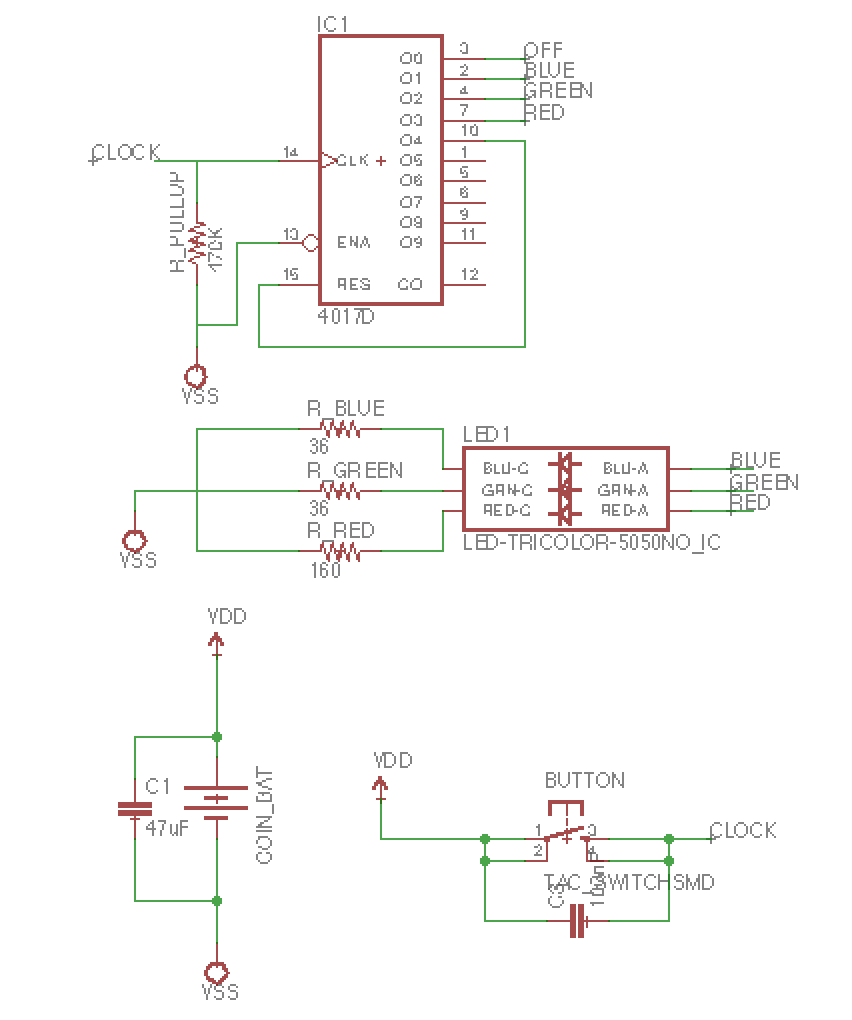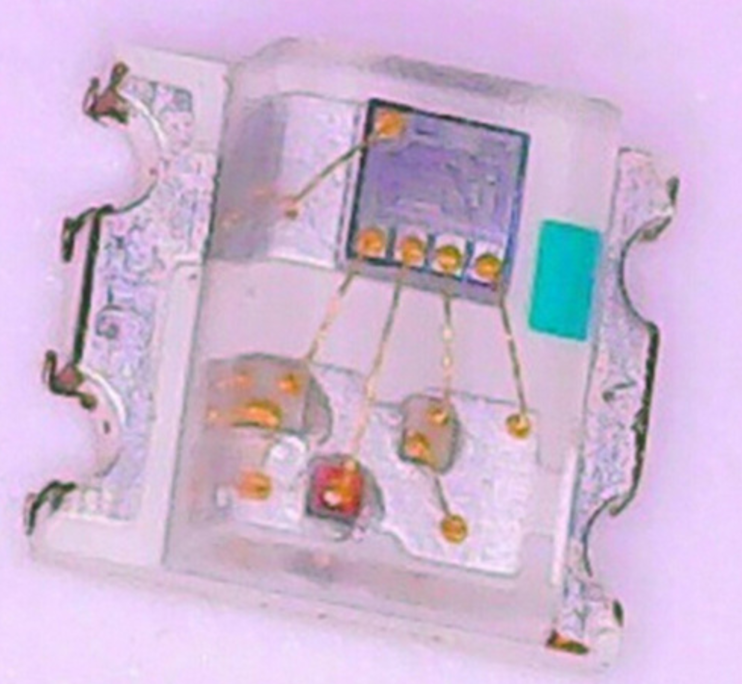Sydnie introduced me to disc golf, which is a really cool sport. Think golf, but replace the clubs and the ball with frisbees. Vancouver, well being vancouver has quite a few disc golfing courses (which also double up as public parks – disc golf isn’t elitist). When winter sets in at the 49th parallel, it can get dark pretty early in the evening. Some amazing soul came up with the idea of putting LEDs on discs to light them up at night.

Sydnie has a bunch of them, and they’re really similar to these you can get off amazon. They’re powered by a coin cell battery and have a tactile switch that can toggle between 4 states – OFF, always ON, fast blink and slow blink. I was super impressed that all of this could be done under a price of 25$ for 12 and in that form factor. The bill of materials for each piece was definitely less than 1$. The engineer in me wanted to replicate this, and I set with much academic naïveté.
I knew the circuit definitely had
- A dual 555 timer or equivalent to enable blinking at a slow and fast rate
- A CR2016 battery (as mentioned in the battery specs)
- A tactile switch
- An LED
As engineers are always wont to do, I wanted to better the current specs and put in an RGB LED whose colors could be toggled through and blinked at different rates. I still wanted to theoretically make it cheaper than the amazon price, so $2 was my limit. There was no way and design could could come under that limit if it featured a micro controller. (An attiny85 itself costs $3 in singles). I would have to stick to using some kind of a digital IC.
An initial idea for a prototype that toggles through multiple states involved a decade counter. A decade counter IC pulls one of its 10 pins high in increasing order when it receives a clock pulse as input (detects the positive edge). A momentary tactile switch (with a capacitor across to prevent key bounce) could be used to pull up the clock pin to VDD from ground through a pull up resistor. As each of the pins of this decade counter can sink more current than the rated supply current of the LED, no additional circuitry would be required. 3*3 pins for (R,G,B)*(ON, Fast Blink, Slow Blink) and 1 pin for OFF. The plan sounded great in principle. I started making the schematics and routing the signals on a dual layer PCB. There was no way I could get this fit in the footprint of a CR2016 battery (which was a vague yardstick and also because I could get a circular PCB). I was definitely doing something wrong in my design.
However when I held Sydnie’s LED against bright light, I couldn’t see any circuitry other than the LED module, switch and the the battery terminals. There were only traces on the PCB. When i looked closely at the LED, it seemed to have too many components on the die for a single color LED. And then it clicked… the 555 die was wire bonded directly to the LED. Putting both dies on the same substrate and wire bonding them together results in a far smaller footprint than laying out a PCB and routing them external to the package. (as an aside, I was listening to the macrofab engineering podcast the other day where there’s a company trying to make systems in chips for products such as the beaglebone, cool!).
I tried finding LEDs with timers integrated, but I was probably using the wrong search terms, nothing turned up. Serendipitously, during one of my good for nothing jaunts on aliexpress, I found flashing/blinking LEDs! They look totally similar to the non flashing ones.
The LEDs I’m getting
- 60pcs blinking solid smd 0805 LEDs for 5.5CAD (fast blink)
- 100pcs 3mm blinking RGB DIP LEDs for 2.7CAD
- 50pcs 0807 RGB LEDs for 6.35 (slow blink)
Ideally, connecting these LEDs to a switch and a battery is all I need to do!
But the engineering doesn’t end there and that’s the most fun part of it all. OFF-ON switches are way more expensive than simpler OFF – momentary ON switches and this makes a huge difference especially when cost is a huge specification. An OFF – momentary ON switch can either produce positive edge or negative edge clock pulses and these can be used to turn a JK flip-flop’s output high or low.
Lines in BOM
- Tactile switch EG4621CT-ND – 2.86 CAD per 10
- JK type flip flop 296-31493-1-ND – 5.22 CAD per 10
- ON – OFF switch – 10.7 CAD per 10
- Battery holder CR2016 – 4.1 CAD per 10
- Batteries CR2016 – 9 CAD per 25
- 470 Ohm resistor – Negligible
- LED – negligible
- PCB – Assuming OSH park medium run at $1/sq inch – 3 CAD per 10
Total price – 18.78 CAD per 10
YAY!

